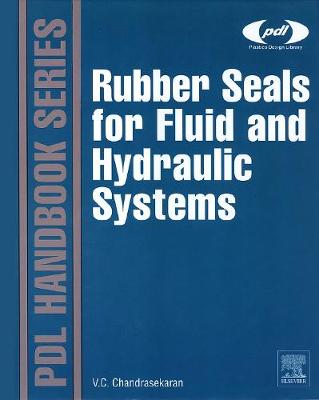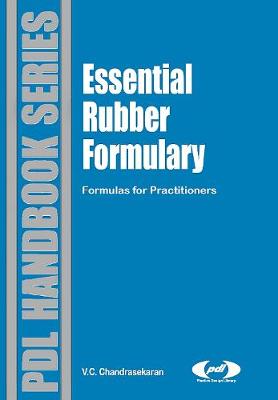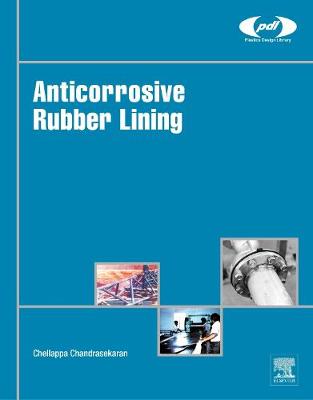Plastics Design Library
3 total works
Rubber Seals for Fluid and Hydraulic Systems is a comprehensive guide to the manufacturing and applications of rubber seals, with essential coverage for industry sectors including aviation, oil drilling and the automotive industry.
Fluid leakage costs industry millions of dollars every year. In addition to wasted money, unattended leaks can result in downtime, affect product quality, pollute the environment, and cause injury. Successful sealing involves containment of fluid within a system while excluding the contaminants; the resilience of rubber enables it to be used to achieve these two objectives and create a tight sealing effect. A sound understanding of the complex factors involved in successful fluid sealing is essential for engineers who specify, design, operate and maintain machinery and mechanical equipment.
This book focuses on the characteristics of rubbers as seals, their manufacturing procedures, the implications of their physical and chemical characteristics for the sealing function in the fluid and hydraulic systems, how rubbers seal and prevent leaks, what properties are required for sealing function, and how they change before and after installation.
The chapter on Manufacture of Seals and 'O'Rings includes approximately 25 workable starting point formulations based on different rubbers, with cure and property data of those formulations as guidelines for technologists and engineers.
Fluid leakage costs industry millions of dollars every year. In addition to wasted money, unattended leaks can result in downtime, affect product quality, pollute the environment, and cause injury. Successful sealing involves containment of fluid within a system while excluding the contaminants; the resilience of rubber enables it to be used to achieve these two objectives and create a tight sealing effect. A sound understanding of the complex factors involved in successful fluid sealing is essential for engineers who specify, design, operate and maintain machinery and mechanical equipment.
This book focuses on the characteristics of rubbers as seals, their manufacturing procedures, the implications of their physical and chemical characteristics for the sealing function in the fluid and hydraulic systems, how rubbers seal and prevent leaks, what properties are required for sealing function, and how they change before and after installation.
The chapter on Manufacture of Seals and 'O'Rings includes approximately 25 workable starting point formulations based on different rubbers, with cure and property data of those formulations as guidelines for technologists and engineers.
Essential Rubber Formulary: Formulas for Practitioners
by Chellappa Chandrasekaran
Published 22 March 2007
The author, a seasoned rubber technologist of four decades, provides more than 180 essential rubber formularies, some of which have never been published, that are used by practitioners the world over on a frequent basis. A special feature of the formulations is that they are designed for factory scale applications.
The opening chapter of this indispensable book gives practical information on compounding techniques, coloring, ingredients, as well as a whole section on typical rubber testing methods. The book concludes with appendices useful for the technologist that include seven conversion tables and three tables on scorching of rubber, specific gravity and volume cost, equivalent chemical names for trade names.
Designing a rubber formula on the factory floor demands knowledge of the whole undertaking, such as the physical nature of ingredients, the interaction of additives and the base rubber during compounding and processing, as well as making sure that the finished product conforms to specification and requirements. This book provides all the necessary knowledge for practitioners and students alike.
The opening chapter of this indispensable book gives practical information on compounding techniques, coloring, ingredients, as well as a whole section on typical rubber testing methods. The book concludes with appendices useful for the technologist that include seven conversion tables and three tables on scorching of rubber, specific gravity and volume cost, equivalent chemical names for trade names.
Designing a rubber formula on the factory floor demands knowledge of the whole undertaking, such as the physical nature of ingredients, the interaction of additives and the base rubber during compounding and processing, as well as making sure that the finished product conforms to specification and requirements. This book provides all the necessary knowledge for practitioners and students alike.
Anticorrosive Rubber Lining discusses the state-of-the-art in this evolving industry, including sections on the best materials and formulations to use, what's best for a particular application, which repair technique is best for a given application, how long a rubber lining is likely to last, vulcanization parameters, and more.
This book deals with the important field of anticorrosive rubber lining and its applications in various industries, including oil and gas, nuclear, aerospace, maritime, and many more, highlighting many of the technological aspects involved. The author offers a unique perspective due to the exclusiveness of the case histories presented, including many industrial rubber lining practices which are mostly kept within the industry.
The technical information on rubber presented here is a practical tool to enable engineers to make the best use of rubber linings to prevent corrosion in chemical plants. The book includes valuable insights into bonding systems, surface preparation, and coating methodologies, and also covers failure analysis of failed systems.
This book deals with the important field of anticorrosive rubber lining and its applications in various industries, including oil and gas, nuclear, aerospace, maritime, and many more, highlighting many of the technological aspects involved. The author offers a unique perspective due to the exclusiveness of the case histories presented, including many industrial rubber lining practices which are mostly kept within the industry.
The technical information on rubber presented here is a practical tool to enable engineers to make the best use of rubber linings to prevent corrosion in chemical plants. The book includes valuable insights into bonding systems, surface preparation, and coating methodologies, and also covers failure analysis of failed systems.


